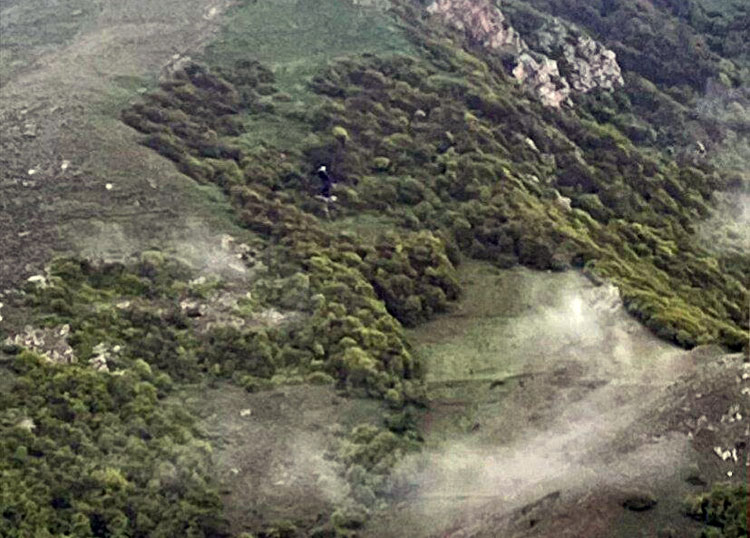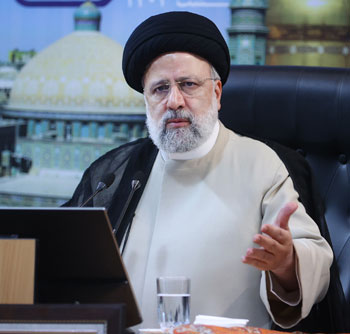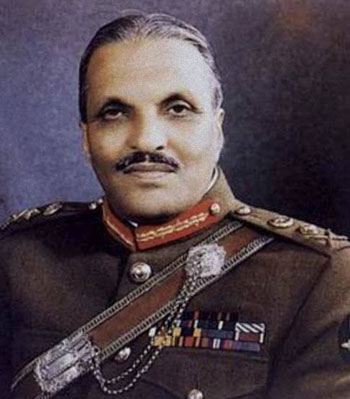INDIAN ARMED FORCES CHIEFS ON OUR RELENTLESS AND FOCUSED PUBLISHING EFFORTS

The insightful articles, inspiring narrations and analytical perspectives presented by the Editorial Team, establish an alluring connect with the reader. My compliments and best wishes to SP Guide Publications.

"Over the past 60 years, the growth of SP Guide Publications has mirrored the rising stature of Indian Navy. Its well-researched and informative magazines on Defence and Aerospace sector have served to shape an educated opinion of our military personnel, policy makers and the public alike. I wish SP's Publication team continued success, fair winds and following seas in all future endeavour!"

Since, its inception in 1964, SP Guide Publications has consistently demonstrated commitment to high-quality journalism in the aerospace and defence sectors, earning a well-deserved reputation as Asia's largest media house in this domain. I wish SP Guide Publications continued success in its pursuit of excellence.
Zia & Raisi: Uncanny Parallels
The deaths of President Raisi of Iran and General Zia-ul-Haq of Pakistan in air accidents delayed the nuclear programmes of their respective countries by at least a decade, benefiting Israel, which opposes their acquisition of nuclear weapons
 |
The Author is former Chief of Staff of a frontline Corps in the North East and a former helicopter pilot. He earlier headed the China & neighbourhood desk at the Defence Intelligence Agency. He retired in July 2020 and held the appointment of Addl DG Information Systems at Army HQ. |

The constant bickering between Iran and Israel had been inflaming an already tense Middle East for the past seven months when on May 19, 2024, news of the deadly helicopter crash that took the life of Iranian President Ebrahim Raisi and his Foreign Minister, Hossein Amir-Abdollahian, along with six others trickled in. The Hamas raids of October 7, 2023 and Israel's ensuing invasion of Gaza had already seen over 36,000 Palestinians dead and most of Gaza in ruins. Iran backed Hezbollah had jumped into the fray expressing brotherhood with Hamas, lighting up Israel's northern borders intermittently. Iran backed Houthis of Yemen opened up another front, sending barrages of drones and rockets towards Southern Israel while also seriously disrupting global shipping in the busy Bab al-Mandeb Strait of Red Sea. It was as curious as it was revealing, that the Sunni Palestinian cause was receiving its succour from Shia Iran and its 'axis of resistance' while the Saudi led Sunni world remained mostly aloof, invested in peace.
On May 19, 2024, a deadly helicopter crash took the life of Iranian President Ebrahim Raisi and his Foreign Minister, Hossein Amir-Abdollahian, among others.
Suspicious timing fuels Conspiracy theories
Things came to a boil on April 1, 2024, when Israel conducted an airstrike on the Iranian embassy complex in Damascus, Syria, generally considered inviolable sovereign territory. Sixteen people, including eight Islamic Revolutionary Guard Corps (IRGC) Quds Force commanders, who managed operations for Iran-aligned forces around the region were killed in the strike. A riposte was inescapable. The situation had the potential to swiftly turn into the start of a devastating regional war. After nearly two weeks, Iran retaliated with over 300 drones and missiles on April 13 night. Nearly all but a handful were neutralised mid-air by Jordanian, US and finally the famed Israeli Iron Dome air defence.
The air crash that killed President Raisi and his foreign minister could significantly delay Iran's nuclear ambitions and weaken the 'axis of resistance.'

An hour after the drone strike, Iran's permanent mission to the UN wrote on X, formerly Twitter, that, "The matter can be deemed concluded." Iran seemed to be signalling it doesn't want this to escalate further. It was abundantly clear that Iran was in no position to ignite a regional war because of an economy crippled by inflation, sanctions, and corruption; widespread dissatisfaction with the regime for enforcing strict dress codes and public conduct.
Just when the situation was tethering on a precipice, the air crash took out two of its most prominent protagonists. President Raisi had an unenviable legacy. As Tehran's deputy prosecutor less than a decade after the revolution, he was a member of the so-called "death commission" that oversaw the massacre of more than 30,000 people in the summer of 1988. He was nicknamed "the butcher of Tehran." His Presidential tenure was marked by the systematic elevation of hardliners at the expense of moderates to key positions, the economy tanked, strafed by inflation at more than 40 per cent while the Iranian Rial also plummeted. Then of course there were the anti-hijab protests that began in September 2022 when the country's fetid religious police murdered 22-year-old Mahsi Amini for incorrectly wearing her hijab. The protests eventually spread to over 100 cities across Iran, during which the state murdered at least 551 people, including 68 children.
Time tested Modus Operandi!
The cause of the air crash will need detailed and painstaking investigation by professionals. But conspiracy theories abound, likening this to another air crash that happened way back in 1988 that took the life of then Pakistan military dictator General Zia-ul-Haq. Was the crash a result of technical failure or an assassination? There is much speculation as to why all the principals were in one helicopter despite there being a three-helicopter fleet.

In Zia's case, a chemical analysis of the wreckage, carried out at the Pakistan Institute of Nuclear Science and Technology in Islamabad, found foreign elements in unusual quantities. For instance, there were traces of pentaerythritol tetranitrate (PETN), an explosive that has since been used in several terrorist attacks, including at least two whose objective was to down an airplane. Residues of antimony and phosphorus, not normally found in aircraft structures, fuel, etc were also present. Another pointer is that General Mirza Aslam Beg, who later rose to the position of Chief of Army Staff, had refused to take the doomed flight despite orders to go aboard the plane.
General Zia-ul-Haq of Pakistan died in a suspicious plane crash on August 17, 1988, alongside most of his top military command and two senior US officials.

Assuming power in July 1977, Zia had taken strides to establish an Islamic republic. After the Iranian Revolution in 1979, Ayatollah Khomeini had become his hero and an Iranian type republic was his goal. There had been a coup in Afghanistan and open support was offered to Afghan resistance groups - in the name of Islamic brotherhood - who opposed the pro-Moscow regime. Zia was successful in gaining active backing from the US to assist the Afghan Mujahidin in their battle against the Soviet Red Army.
Between 1978 and 1985, Zia took a number of steps to complete Pakistan's transformation into a theocracy of the medieval variety. A combination of the Mullah and a military alliance was in place and a Federal Shariat Court was created for enforcing religious laws. The Penal Code was amended to provide for punishment for desecration of the Holy Quran and for punishing blasphemy with death or life imprisonment (later on the Shariat Court made death for blasphemy mandatory). He also subverted the education system by facilitating the growth of religious seminaries or the madrassas and religious-radicalism ruled the roost.
On August 17, 1988, General Zia along with most of his top military command and the US ambassador to Pakistan, Arnold Raphel, and Brig General Herbert M. Wassom, the head of the US military aid mission to Pakistan were killed when the Lockheed C-130 Hercules aircraft they were traveling in crashed soon after take-off from an airstrip in Bahawalpur, about 330 miles south of Islamabad. It was suspected that the CIA wiped out Zia because he was getting too close to the Afghan mujahedeen, particularly the fearsome fundamentalist warlord Gulbuddin Hekmatyar.
General Zia had transformed Pakistan into a theocracy, established a Federal Shariat Court, and amended the Penal Code to include severe punishments for blasphemy and desecration of the Holy Quran.
In other words, Zia had outlived his usefulness to the Americans, who may have viewed the photogenic, Western-educated Benazir as a more suitable ally in Pakistan. It's fair to question why the CIA would bring down an aircraft carrying two senior US government officials. However, as journalist Edward Jay Epstein noted in an article in Vanity Fair in September 1989, Ambassador Raphel and General Wassom were not scheduled to board Zia's plane; they were last-minute additions.
Motive and the Beneficiary
Perhaps the most compelling conspiracy theory about Zia's death was spun by then-US Ambassador to India John Gunther Dean, who pointed the finger at the Mossad, the Israeli intelligence agency. Dean proposed that Israel feared Zia's developing a nuclear bomb and the possibility that he would share it with other Muslim nations or enemies of Israel. Indeed, Zia called his nuclear project an "Islamic bomb."
Similarly, President Raisi and his foreign minister, along with the IRGC pursued a foreign policy based on aggressive adventurism and ideologically unyielding conflict with Israel. Iran had walked away from negotiations on capping its nuclear program and were very close to enriching Uranium to weapon grade. One thing is certain, though. Israel was a beneficiary of Zia's death as it pushed the development of nuclear bomb by at least a decade. So is the case with the death of Raisi. It would set the clock back on Iran developing a nuclear arsenal, weaken the resolve of the 'axis of resistance' and possibly fan the winds of de-radicalisation.





